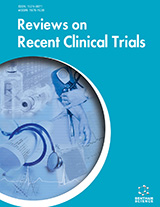Abstract
The potential for angiotensin II (AII) to promote tumor growth has been suspected based on its known hormonal actions and its vasoconstrictor effect. It has been suggested that angiotensin-converting enzyme (ACE) inhibitors may offer protection against cancer and may prevent carcinogenesis. Several studies report that AII can induce neovascularization in experimental systems by way of the AII type 1 receptor (AT1R). AT1R is also frequently expressed in such human tumors as skin cancer, renal cell carcinoma, and breast cancer. A growing number of recent studies focusing on treatment with an AT1R antagonist have demonstrated that angiotensin receptor blockade (ARB) appears to inhibit not only the growth of cancer cells but also tumor angiogenesis. We describe here the effects of AT1R blockade that implicate tumor angiogenesis in urogenital cancer since ARB may be an alternative modality for anti-cancer treatment.
Keywords: Angiotensin, prostate, bladder, kidney, angiogenesis, receptor
Reviews on Recent Clinical Trials
Title: Angiotensin II Type 1 Receptor Antagonist as an Angiogenic Inhibitor in Urogenital Cancer
Volume: 4 Issue: 2
Author(s): Akira Miyajima, Eiji Kikuchi, Takeo Kosaka and Mototsugu Oya
Affiliation:
Keywords: Angiotensin, prostate, bladder, kidney, angiogenesis, receptor
Abstract: The potential for angiotensin II (AII) to promote tumor growth has been suspected based on its known hormonal actions and its vasoconstrictor effect. It has been suggested that angiotensin-converting enzyme (ACE) inhibitors may offer protection against cancer and may prevent carcinogenesis. Several studies report that AII can induce neovascularization in experimental systems by way of the AII type 1 receptor (AT1R). AT1R is also frequently expressed in such human tumors as skin cancer, renal cell carcinoma, and breast cancer. A growing number of recent studies focusing on treatment with an AT1R antagonist have demonstrated that angiotensin receptor blockade (ARB) appears to inhibit not only the growth of cancer cells but also tumor angiogenesis. We describe here the effects of AT1R blockade that implicate tumor angiogenesis in urogenital cancer since ARB may be an alternative modality for anti-cancer treatment.
Export Options
About this article
Cite this article as:
Miyajima Akira, Kikuchi Eiji, Kosaka Takeo and Oya Mototsugu, Angiotensin II Type 1 Receptor Antagonist as an Angiogenic Inhibitor in Urogenital Cancer, Reviews on Recent Clinical Trials 2009; 4 (2) . https://dx.doi.org/10.2174/157488709788185996
| DOI https://dx.doi.org/10.2174/157488709788185996 |
Print ISSN 1574-8871 |
| Publisher Name Bentham Science Publisher |
Online ISSN 1876-1038 |
 13
13
- Author Guidelines
- Bentham Author Support Services (BASS)
- Graphical Abstracts
- Fabricating and Stating False Information
- Research Misconduct
- Post Publication Discussions and Corrections
- Publishing Ethics and Rectitude
- Increase Visibility of Your Article
- Archiving Policies
- Peer Review Workflow
- Order Your Article Before Print
- Promote Your Article
- Manuscript Transfer Facility
- Editorial Policies
- Allegations from Whistleblowers
Related Articles
-
Spacer Length: A Determining Factor in the Design of Galactosyl Ligands for Hepatoma Cell-Specific Liposomal Gene Delivery
Current Drug Delivery Copper Transport Systems are Involved in Multidrug Resistance and Drug Transport
Current Medicinal Chemistry Insights into Angiogenesis in Non-Small Cell Lung Cancer: Molecular Mechanisms, Polymorphic Genes, and Targeted Therapies
Recent Patents on Anti-Cancer Drug Discovery Polymersomes in Nanomedicine - A Review
Current Nanoscience Targeting p53 in Cancer
Current Medicinal Chemistry - Anti-Cancer Agents Targeted Therapy in Advanced Gastric Carcinoma: The Future is Beginning
Current Medicinal Chemistry Anti-Angiogenesis Activities of Dietary Constituents and Health Foods with Potential Anti-Hepatocellular Carcinoma Activity
Recent Patents on Biomarkers HIF-1 Inhibitors for Cancer Therapy: From Gene Expression to Drug Discovery
Current Pharmaceutical Design The Pim Kinases: New Targets for Drug Development
Current Drug Targets microRNA Biogenesis Pathway as a Therapeutic Target for Human Disease and Cancer
Current Pharmaceutical Design Synthetic and Natural Products as Iron Chelators
Current Topics in Medicinal Chemistry Nanoparticles for Tumor Targeted Therapies and Their Pharmacokinetics
Current Drug Metabolism Monitoring Cell Therapy Using Iron Oxide MR Contrast Agents
Current Pharmaceutical Biotechnology Tyrosine Kinase Inhibitors
Current Cancer Drug Targets Honey as a Source of Dietary Antioxidants: Structures, Bioavailability and Evidence of Protective Effects Against Human Chronic Diseases
Current Medicinal Chemistry Vitamins B1, B2, B3 and B9 – Occurrence, Biosynthesis Pathways and Functions in Human Nutrition
Mini-Reviews in Medicinal Chemistry Gold Nanoparticle-Based Drug Delivery Platform for Antineoplastic Chemotherapy
Current Drug Metabolism Small Molecule Toxins Targeting Tumor Receptors
Current Pharmaceutical Design Renal Cell Carcinoma in a Patient with Rheumatoid Arthritis Treated with Adalimumab
Current Drug Safety Anti-cancer and Other Bioactivities of Korean Angelica gigas Nakai (AGN) and Its Major Pyranocoumarin Compounds
Anti-Cancer Agents in Medicinal Chemistry


























